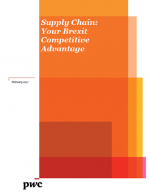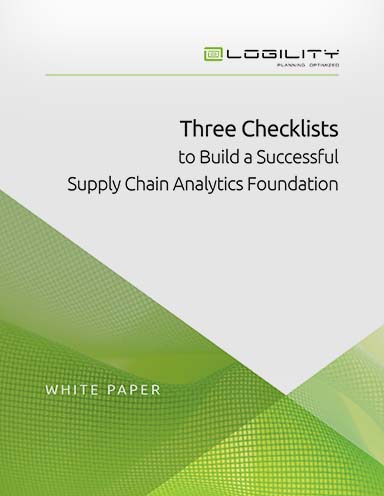Three Checklists to Build a Successful Supply Chain Analytics Foundation
This white paper dives into the importance of building robust supply chain analytics capabilities to support profitable revenue growth and exceptional customer service, and offers three easy-to-use checklists to help get you started.
Executive Summary
Building robust supply chain analytics capabilities is more important than ever.
Economic pressures including rising fuel costs, global expansion, off-shore low cost competition, and tight manufacturing capacities continue to stretch a supply chain team’s ability to reduce costs while meeting ever-increasing customer expectations.
To complicate matters, finding and retaining qualified supply chain talent continues to be an issue.
Top supply chain talent tends to migrate to companies that have invested in modern solutions that allow users to spend their time creating value versus shifting through spreadsheets to format, align, validate and report on last week’s data.
Supply chain analytics is the application of mathematics, statistics, predictive modeling and machine-learning techniques to find meaningful patterns in the vast mountains of data produced by enterprise systems and external sources.
Tapping into both structured and unstructured data sources, advanced analytics help you draw conclusions about your demand, inventory, production and distribution operations to quickly drive more informed business decisions.
An important goal of a supply chain analytics initiative is to enable better business decisions that improve operating results and allow you to be more responsive to customer needs.
Overview
Interest in supply chain analytics continues to grow at an exponential rate. Research has shown a strong correlation between more advanced analytics and higher Return on Investment (ROI). Higher analytics maturity levels often lead to improved product quality, increased revenues and service levels while decreasing inventory.
Understanding Supply Chain Analytics Maturity
Most organizations analyze their supply chains using reports and key performance indicators (KPIs) to determine what happened. This basic form of supply chain analytics is known as ‘Descriptive Analytics.’
Many organizations have also deployed data warehouse and business intelligence (BI) systems that provide the tools to diagnose what happened and why.
While this information is useful, you miss the opportunity to determine how to shape a future response. More mature and advanced users of analytics have made concerted efforts to transform data into predictive and prescriptive insights.
Over time, these companies have evolved from using backward-looking reports and metrics to forward-looking decision-making capabilities that suggest an optimal plan of action and add significantly more value.
What’s Related




Favorites





